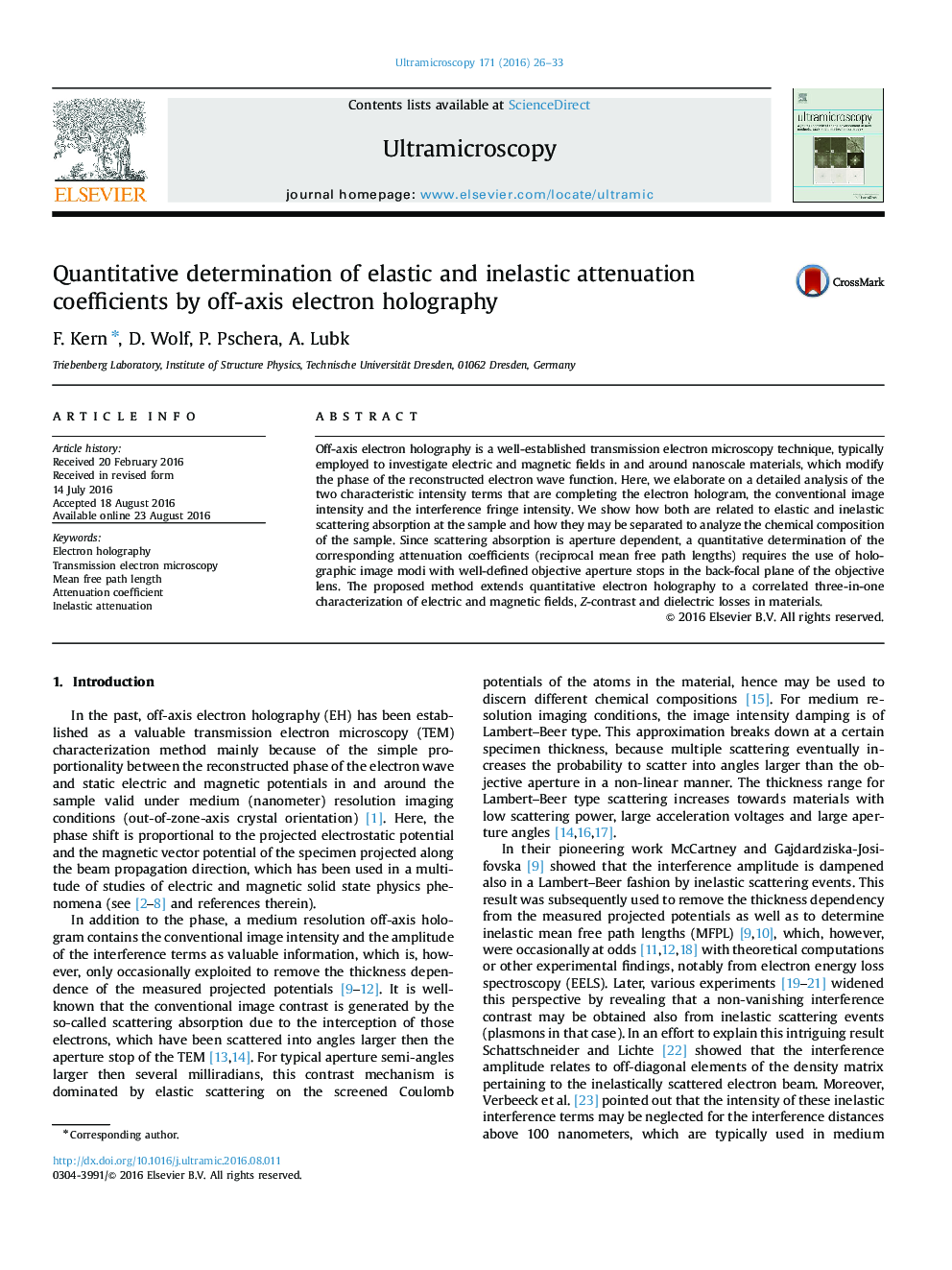| Article ID | Journal | Published Year | Pages | File Type |
|---|---|---|---|---|
| 1677335 | Ultramicroscopy | 2016 | 8 Pages |
•Quantitative determination of attenuation coefficients by electron holography.•Separation of elastic and inelastic attenuation coefficients (mean free path length).•Quantitative determination of the objective aperture semi-angle influence.•Compilation of elastic and inelastic attenuation from different materials.
Off-axis electron holography is a well-established transmission electron microscopy technique, typically employed to investigate electric and magnetic fields in and around nanoscale materials, which modify the phase of the reconstructed electron wave function. Here, we elaborate on a detailed analysis of the two characteristic intensity terms that are completing the electron hologram, the conventional image intensity and the interference fringe intensity. We show how both are related to elastic and inelastic scattering absorption at the sample and how they may be separated to analyze the chemical composition of the sample. Since scattering absorption is aperture dependent, a quantitative determination of the corresponding attenuation coefficients (reciprocal mean free path lengths) requires the use of holographic image modi with well-defined objective aperture stops in the back-focal plane of the objective lens. The proposed method extends quantitative electron holography to a correlated three-in-one characterization of electric and magnetic fields, Z-contrast and dielectric losses in materials.
